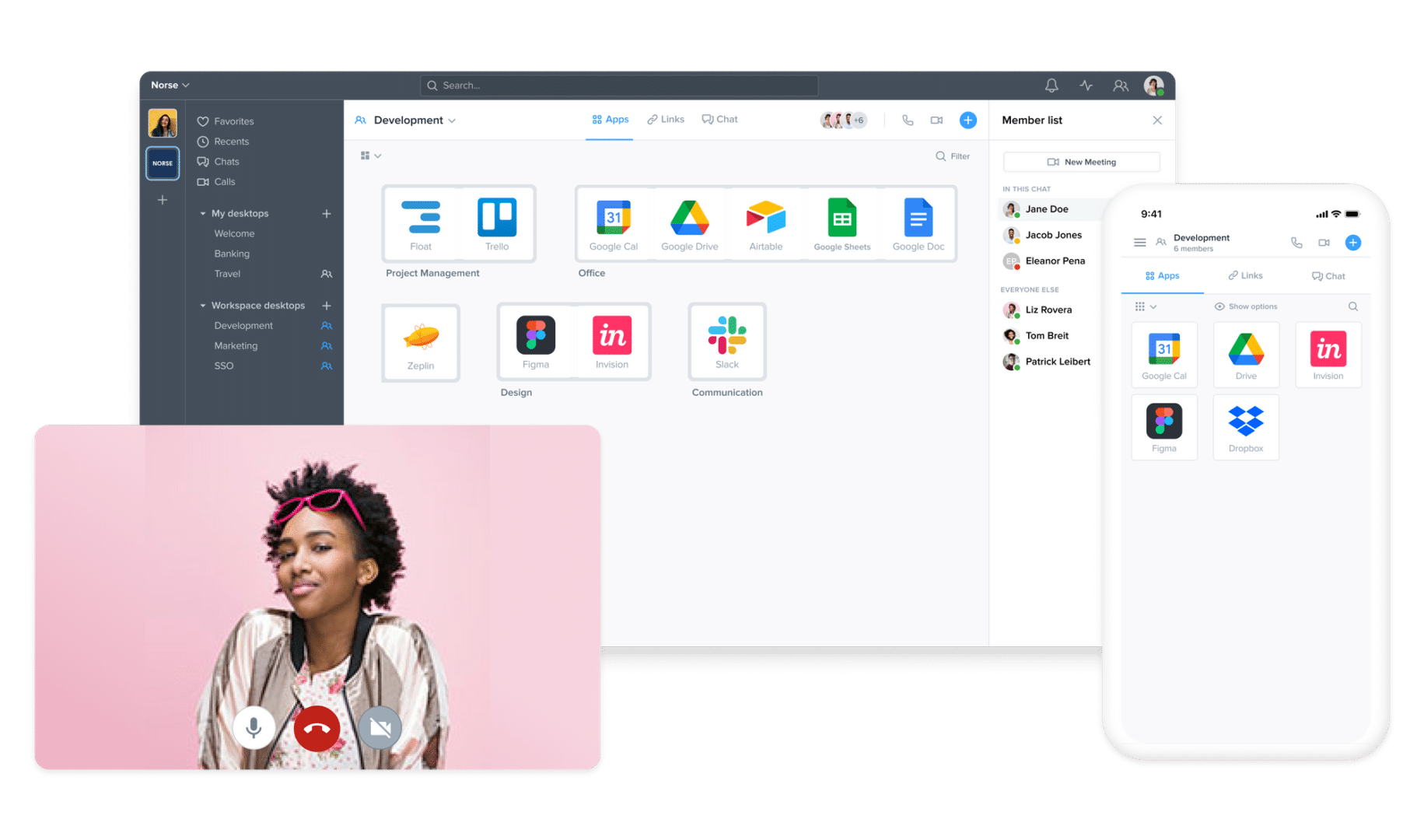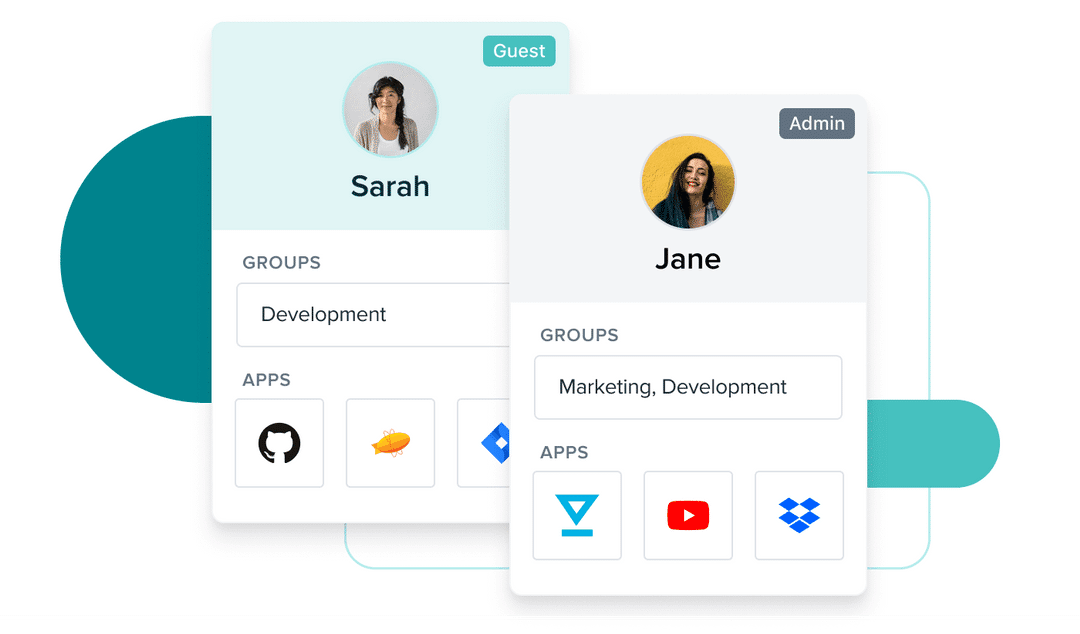Coming this month, Desktop.com will be a cloud service that bridges the gaps between teams, tools and devices by providing a unified online workplace with organization, management and collaboration all in one place. While we wait for it to be launched, we talk with Rolf Larsen, the CEO and Founder of Desktop.com, about his source of inspiration for starting the brand, the name Desktop.com, and what can we expect from them in the coming period.
Rolf, as we’re here trying to build a story about your brand, the reader might need some exposition. Can you tell us what is the prologue to your business, what is the story behind your inspiration in starting the company?
Being a serial entrepreneur and having managed remote teams for 25+ years, I’m very familiar with both the benefits and the challenges of working primarily online. In September 2019, I woke in the middle of the night with the idea that eventually became Desktop.com. The idea was to create a service that would allow individuals and businesses to better organize, access, and manage online resources such as apps, links, and bookmarks. The idea came from my own pain points and that I was unable to find a satisfying solution on the market. From this moment, Desktop.com began to take shape into the unifying collaborative hub that it is today, bridging the gaps between the many moving parts of remote work and creating a more streamlined and organized experience.

What about the domain name Desktop.com grabbed your attention and seemed like the right fit for the business?
The name “Desktop.com” is short, memorable, and strong – all of which are values that I look for when branding a new service that I truly believe to have great potential. Furthermore, the name also manages to deliver an instant idea of what it is that we provide, which is very valuable in today’s fast-paced world. So, all of the above considered, Desktop.com was my top choice of all of the domain alternatives I came up with.
Why did you decide to brand as Desktop.com, rather than simply “Desktop”? Was it a conscious decision to include the domain name in the brand name?
While “Desktop” alone is purely generic, Desktop + .com creates a one-of-a-kind identity. Having a strong keyword .com domain name brings a lot of inherent value, such as trust and a sense of being well-established, recognizable and not to mention web-based. Our solution, the way we work as a team as well as how the service itself works, is all centered around the web, which makes using a domain name as the brand name a natural choice for us.

While “Desktop” alone is purely generic, Desktop + .com creates a one-of-a-kind identity. Having a strong keyword .com domain name brings a lot of inherent value, such as trust and a sense of being well-established, recognizable and not to mention web-based.
Rolf Larsen, CEO and Founder of Desktop.com
What are the benefits that you expect from getting this short keyword domain name? What advantages does it give you over the competition?
The two biggest benefits of using a single word domain name to brand your business is that potential customers and partners A. instantly understand where to go in order to learn more (since the brand is the domain name they can’t misunderstand where to find the website and there is no need for them to weed through a google search), and B. instantly get an indication of what kind of products/services you are offering, as opposed to a fictional name.
Additionally, using your domain name as your brand can provide some relief during the early stages of your business, before you’ve had the time to optimize all other SEO factors. For instance, by using Desktop.com as our brand name we avoid certain common pitfalls and that our marketing efforts get diluted due to:
* Customers ending up on the wrong website because they don’t know the domain name extension. The fact that there are now more than 1,000+ new domain name extensions available makes it more important than ever to clearly display how to find your website.
* Customers getting lost in a google search because they don’t know the domain name. For instance, many people run to complete the company registration and trademarking before even considering registering the domain name. This usually results in them realizing that the brand name alone is not available to register under their desired domain name extension (usually .com). In those cases, it is not uncommon for companies to add words before or after the brand, in order to secure the .com domain name, e.g. be[brand].com, try[brand].com or get[brand].com.
* Customers having short attention spans in combination with being subjected to massive amounts of information each day, which results in them not being able to easily remember your domain name after having been exposed to it.
* Customers misspelling your complicated brand/domain name when they type it into their browser and subsequently ending up in the wrong place.
How has the domain acquisition affected your team, what’s the feedback you get?
I would say they are all excited about it. Most of them have a history in the domain name industry and are very familiar with the benefits of a well-thought-out domain and branding strategy.
What would you say is the most important thing for your brand right now?
Right now the most important thing is to generate awareness – about the solution, about the brand. After months of focus on generating content while developing and refining the service for launch, it’s now time to (fully) step out and share it with our target audiences.

What do you think is the most important aspect of building a brand identity?
I’m a big believer in starting from deep within the organization and involving the team members in creating and formulating the core of the brand: our values, the mission, the vision, messaging, and purpose. Once we have an understanding that seeps through the entire team, ensuring that we are all on the same page, we dive into translating this into a more visual concept. I guess that’s what I consider to be the key – to let your brand identity be based on a well-established and thought-through core, instead of first deciding a visual profile and then attempting to align it with your team’s various ideas about what you are trying to do.

If you could give one piece of advice to someone considering acquiring a premium domain name, what would it be?
First of all, I’d say – good for you! Prioritizing your online branding is important, and the sooner you do it the better.
My main piece of advice would be not to give up on your desired name merely because the initial price appears to be out of reach. There is usually room for negotiation or alternative payment plans, and using a broker can be a good idea (I personally used Sedo when negotiating the Desktop.com domain). For instance, if the price is too high to pay upfront, would you consider paying in installments? That might be the key to getting your desired premium domain name.

If the price is too high to pay upfront, would you consider paying in installments? That might be the key to getting your desired premium domain name.
Rolf Larsen, CEO and Founder of Desktop.com
We can’t wait for the launch, what is the biggest thing your team is working on right now? When we should expect the launching date?
The biggest thing we’re working on right now is the communication features, app integrations (which will allow you to use Desktop.com to collaborate and communicate across different apps), and our own password manager. Pretty amazing things that will truly connect the dots for remote working teams. The launch is scheduled for February!
We hope the above information will help you in making informed decisions about your brand. If you want to say hi or have any questions about naming, branding, and domain names get in touch, we’re always happy to hear from you.
Find out more about Desktop.com

Previous Next